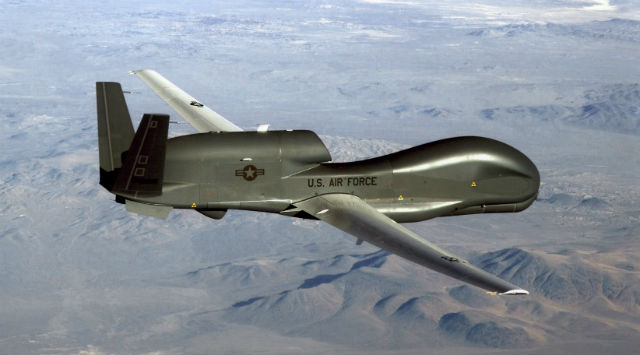Honeywell is in discussions regarding testing of its unmanned air vehicle sense and avoid capability on the Northrop Grumman RQ-4 Global Hawk.
The system is currently being developed for large UAVs, having previously been tested on board the General Atomics Aeronautical System MQ-9 Reaper, but Honeywell is exploring testing on larger system like the high altitude, long endurance RQ-4.
“We’ve been working on a sense and avoid capability for use in the national airspace for some time now,” Howie Wiebold, business development manager for Honeywell, says. “We’ve been flight testing with several OEMs, mainly General Atomics with the Predator.
“We believe this is a discriminator for UAVs and we think there will be a requirement for this…for operations in the national airspace, as well as military airspace.”

US Air Force
The system it is offering is “sensor agnostic”, and utilises the sensors on board the UAV to incorporate the sense and avoid capability. Wiebold anticipates that the eventual offering will include sense and avoid of cooperative – those aircraft that carry systems that transmit their whereabouts – and non-cooperative objects that will be sensed by systems such as radar.
The system centres around feeding data from the sensors on board the UAV into its ground control station and providing a picture of what is around the aircraft to avoid.
Additionally, more flight testing is planned on board the Predator throughout 2015 and 2016, some of which will be for NASA that is exploring integrating UAVs into ATC.
“We’re working towards a certifiable product and we’re trying to be ahead of the game,” Wiebold adds.
Source: FlightGlobal.com























